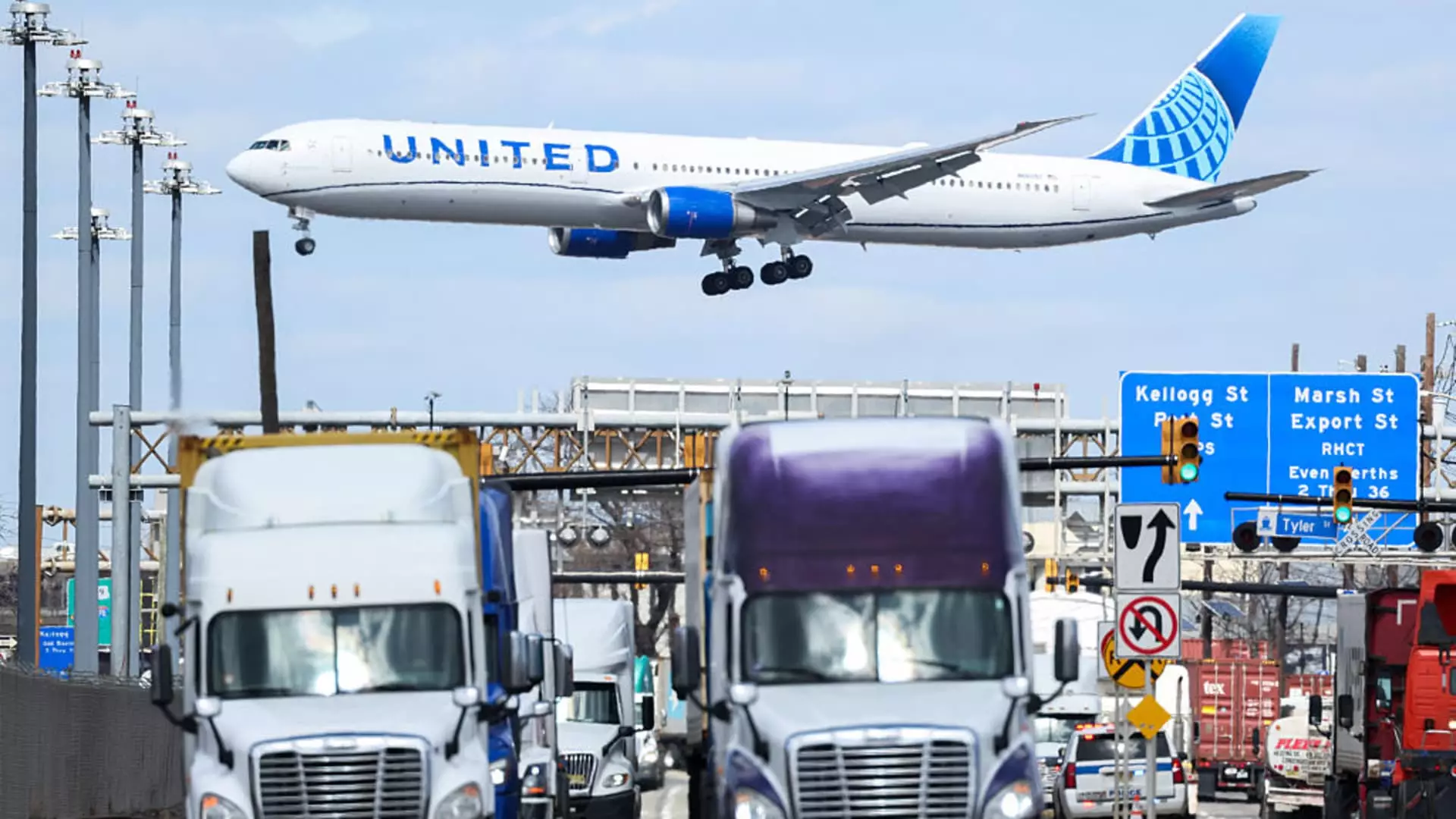The recent update from United Airlines serves as a stark reminder of the unpredictability permeating today’s economic climate. Despite the company’s decision to maintain its full-year guidance, it has hedged its bets by issuing a second forecast predicated on the possibility of a U.S. recession. Such a strategy evidences a stark recognition of the fragility of current economic conditions. It is commendable that United Airlines remains optimistic about sustained profitability. However, by simultaneously acknowledging the catastrophic implications of a potential recession, they illuminate the thin line they tread. Optimism must coexist with caution in an economy where forecasts fluctuate with disconcerting rapidity.
Domestic Demand: A Troubling Trend
The reduction in domestic flight capacity by about 4% is an alarming announcement, directly correlating with declining domestic travel demand. While it’s prudent to recalibrate capacity in the face of insufficient demand, this action also signifies a broader trend in consumer behavior that deserves scrutiny. Passengers are seemingly gravitating towards international flights and premium services, leaving domestic routes vulnerable. The dilemma encapsulated here reveals a shift in consumer priorities, suggesting that while the economy continues to tease favorable indicators, real-world sentiment may run contrary to such optimism.
People are yearning for experiences perceived as valuable and worthwhile, causing the airline industry to bespeak the dichotomy of accessible versus premium travel. This burgeoning market for international trips is both an opportunity and a challenge for United Airlines, which must navigate the nuanced sentiment of domestic travelers while capitalizing on lucrative international bookings.
Implications of Higher-End Travel Trends
United’s revelation that premium-cabin bookings surged by 17% underscored a salient trend affecting the airline’s bottom line. Travelers are opting for quality over quantity, willing to splurge on tickets that guarantee an elevated experience. This emerging division among consumers—those eager to pay for premium offerings and those constrained by economic uncertainty—poses a challenge that airlines cannot afford to ignore.
In juxtaposition to the reports of their internal revenue trends, the airline industry’s capacity to capitalize on premium services might serve as a buffer against unfavorable economic conditions. However, caution must prevail; complacency based on current booking trends could be perilous should economic conditions radically change. The fact that traditional domestic flight routes are losing ground in favor of international routes amplifies the urgency for United Airlines to reevaluate its long-term strategy.
Cautious Optimism in Earnings Reports
United Airlines reported a significant profit of $387 million for the first quarter. Yet, it is important to dissect the undercurrents of this declaration. While they outperformed Wall Street expectations regarding adjusted earnings per share, a deeper analysis reveals that the revenue generated fell slightly short of analyst forecasts. This discordance demands attention. Investors should approach these figures with measured optimism, ensuring that the apparent growth is not merely a mirage amidst turbulent economic waters.
Moreover, the broader landscape of commercial aviation is rife with uncertainties, many of which stem from external pressures, such as shifting government policies and international relations that can swiftly alter the travel landscape. The fallout from President Trump’s trade war and the potential implications of mass layoffs add additional layers of complexity that United Airlines must navigate skillfully.
The Industry’s Competitive Landscape
As United Airlines maneuvers through these uncertainties, it must remain cognizant of the competitive dynamics at play. Rival Delta Air Lines has already signaled a slowdown in growth expectations, reflecting a broader aversion among airlines to overextend themselves during unpredictable times. The interplay of these forces will require nimble adjustments from United, as they balance between maintaining profitability and seizing opportunities where they arise.
United’s leadership under CEO Scott Kirby emphasizes a multiyear strategy designed to bolster their position, yet consumers ultimately wield more power than ever. The pressing question remains: how will the airline adapt to the potential duality of a robust premium market juxtaposed against diminishing domestic demand? The ability to predict and respond to these expansive dynamics will define United’s trajectory in an industry where change is the only constant.
In the coming quarters, it will be intriguing to witness how these predictions materialize, steering United Airlines toward either a victory lap or a cautionary tale in economic resilience.

